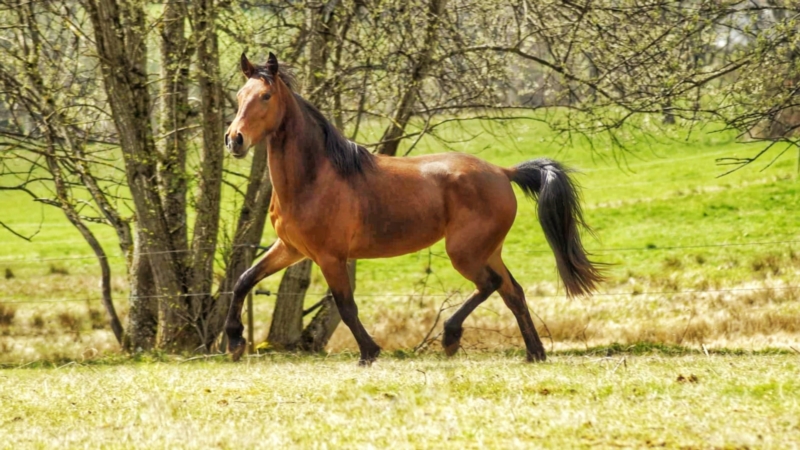The Racking Horse is an American breed. The foundation period of this gaited horse was in the 1800s and it was recognised as a breed in 1971. This breed of horse is extremely comfortable to ride. The best place to buy a Racking Horse is in Alabama or Tennessee, since these are its home states, and the breed is very popular there. The population of Racking Horses in the USA numbers in the thousands, so it is not too hard to find breeders and trainers who will sell a Racking Horse anywhere in the USA.
Racking horse – History and Origins
Gaited horses; that is, horses that have gaits other than standard walk, trot and canter (or jog and lope in Western riding) have existed for a long time. Recent research suggests that ambling gaits have been around since long before horses were domesticated. The ancestors of gaited American breeds came from various parts of Europe, including Spain, Britain and Ireland.
The horses were comfortable to ride on long journeys, just as their ancestors had been in Europe. The development of the Racking Horse as a breed is closely related to that of the Tennessee Walking Horse, but the two breeds developed somewhat different gaits. At the beginning of their development, the Racking Horses were simply seen as a type of Walking Horse. They were popular at shows because of their impressive speed and action.
It wasn’t until 1971 that the breed gained its own organisation, with the formation of the Racking Horse Breeders’ Association of America (RHBAA) and a Racking Horse registry. In that year, the US Department of Agriculture acknowledged Racking Horses as a separate breed from the Tennessee Walking Horses. Four years later, the Racking Horse became the official state horse of Alabama.
How many gaits does the Racking Horse have?
In addition to the three basic gaits, walk, trot and canter, the Racking Horse has a further gait, namely the rack. This is a four-beat gait, similar to the tölt of Icelandic horses.
Use and characteristics
Racking Horses are usually categorised as light riding horses. They are prized for their beauty, intelligence and rideability. Their average height is around 15.2 hands (62 inches/157 cm) and they weigh up to 1,000 pounds (450 kg). Their legs are slim, yet extremely strong, and the overall impression is of grace and speed.
Their speed is an important quality, as is their relaxed, friendly temperament. Racking Horses amble, rather than walk. Coat colours can be solid, including black, bay, brown, chestnut, sorrel and grey. Dilution gene colours, such as dun and cream, are also known, as are Pinto Racking Horses.

Their average height is around 15.2 hands (62 inches/157 cm) and they weigh up to 1,000 pounds (450 kg).
Racking Horses in equestrianism
Racking Horses, also known as Rackers and RHs, provide a link back to the early days of European settlement in the Americas. Their gaits are supremely comfortable to ride and they can be very fast indeed. The amble is a four-beat intermediate-speed gait. It is also known as the rack, and sometimes single-foot since one foot is always in contact with the ground at any time. Some individuals also present a “show walk”, which is a four-beat gait, as well as canter.
When racking, the horse can travel at any speed from 8 mph up to 30 mph. An astonishing 51 mph was allegedly recorded by one Racking Horse, EZD Falcon Rowdy, over a short distance in the 1970s. Racking Horses are superb riding horses for many equestrian disciplines. They can be shown in the saddle seat or Western style. Both speed and pleasure racking competitions are open to them. They excel at endurance, being tough, reliable and willing.
How fast can a Racking Horse run?
A Racking Horse can run at speeds of up to 50 km/h. The speed rack gait is very variable in its speed.

